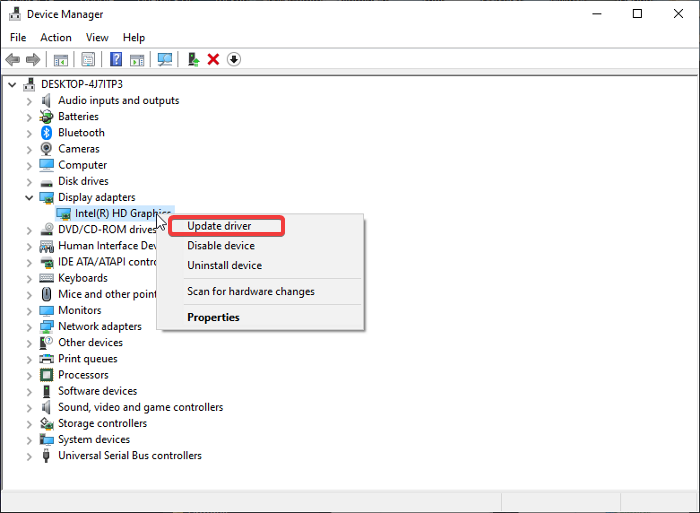If your brightness control isn’t working, it can drain your battery quickly and harm your eyes if the brightness is too intense, therefore it’s something that has to be addressed as soon as possible. Furthermore, this issue is primarily caused by a few factors, including driver and power troubles. However, we will go over everything you need to know about this issue and the best solutions to fix Windows 10 brightness control not working in this article. Please stick with us to the end. ALSO READ: Best GPU for Intel Core i9 12900K in 2022
Ways to Control Brightness in Windows 10
While some folks may be experiencing brightness control issues only because they just don’t know how to regulate brightness on their Windows 10 computer, we’ve prepared a list of alternative ways to do it. Simply try out some of the approaches to determine whether the problem is caused by a malfunctioning keyboard or something else. Here are several options for adjusting brightness in Windows 10:
Make use of Action CenterUse the Function keysEnable Adaptive Brightness
Fix Windows 10 Brightness Control Not Working
Windows 10 brightness control not working issue is one of the most frustrating issues a user can ever face as the battery gets drained faster and you get uncomfortable while making use of your computer. However, this problem can be traced back to the use of outdated or buggy display drivers, as well as tampered display settings. Furthermore, it’s possible that your brightness navigation buttons aren’t working, so try controlling the brightness using your mouse via brightness settings. After going over all of this, let’s look at the other ways to fix the Windows 10 brightness control not working problem:
1. Fix the Driver Issue
The Display Driver is the software behind every display control, and any issue with this could be detrimental to your display system, which could be why your brightness control isn’t working. As far as the display driver is concerned, it may need to be updated or rolled back to a previous version to start functioning well and as a result, fix Windows 10 brightness control not working. So how do you go about these?
Update Network Driver
Drivers can be updated in a variety of ways, but the best option is to go to the website for your display driver, which will vary depending on which one was installed on your computer. Then, browse for and download their most recent driver file. After that, proceed to the next stages. Step 1: Open Device Manager on your computer. Step 2: Double-click on the Display adapters option and right-click your driver on the list. Step 3: From the resulting drop-down menu, hit Update driver. Step 4: Select Browse my computer for driver software and follow other on-screen prompts to update your driver to the latest one you’ve downloaded.
Roll Back Driver
This problem appears for some users after updating the display driver. If this is the case, you should roll back your driver to the previous version, as it is likely incompatible with your Windows. To roll back the driver, follow these steps: Step 1: Go to Device Manager on your PC Step 2: Double click on Display adapters and right clock your display driver Step 3: Click on Properties and switch to the Driver category Step 4: Then select Roll Back Driver. After doing all this, make sure you restart your computer and try using the brightness control again.
2. Restart PC
When your brightness control doesn’t seem to be working, simply restarting your computer can assist. This is a pretty direct approach to fixing minor computer issues, and it might be useful in this case as well. Furthermore, doing so will erase any memory problems on your computer and give it a fresh start. So, restart the computer and see if the controls have returned to normal.
3. Be Sure You Are Using The Right Shortcut
Users may not be aware of the exact keyboard shortcut for controlling brightness on their computer, so they continue to use the incorrect key, which will not work. Before you get too worried about your Windows 10 PC’s brightness control not working, check out the key shortcut that works for brightness control on your computer or return to the previous section, which detailed some of the ways to adjust brightness on Windows 10.
4. Enable Generic PnP Monitor
Making sure the generic PnP monitor is enabled in Device Manager is another approach that has helped some people fix the Windows 10 brightness control not functioning issue. The brightness of the control may not respond if this function is disabled. Here’s how to use the feature. Step 1: Search for Device Manager in Windows Search Box and Open it. Step 2: Navigate to the Monitors option and double-click it. Step 3: Right-click on your Generic PnP monitor and hit Enable device. Then restart your PC and see if the brightness control is already working RELATED: How to Fix Audio Issues In Windows 10
5. Uninstall Windows Updates
Most of the time, this issue occurs after performing a Windows Update, in cases like that, there is a problem with the update. Therefore, it’ll be recommended to uninstall the updates, and here is how it can be done: Step 1: Press Windows + I keys together to open Settings. Step 2: Click on Update & Security. Step 3: Select View update history in the Windows Update category. Step 4: Hit Uninstall Update. Restart your PC after the PC and check if the issue is fixed or not. If it’s not fixed, try the next solution.
6. Enable Adaptive Brightness
Another option to fix Windows 10 brightness control not working is to enable adaptive brightness. Instead of needing to manually adjust your computer’s brightness, this feature automatically adjusts it based on the ambient light. To enable adaptive brightness, follow these steps: Step 1: Type Edit power plan in the Windows Search box and open it. Step 2: On the resulting page, click Change advanced power settings. Step 3: Now expand the Display option and turn On Enable Adaptive Brightness. Step 4: Click Apply and OK to save the changes. Afterward, restart your computer and check if the issue is fixed. Note: Not all computers have this function.
What do I do if my Windows 10 brightness control not working?
If your Windows 10 brightness control isn’t working, try out these solutions
- Update Display Driver
- Restart your Computer
- Enable PnP Monitor
- Uninstall Windows Updates
- Enable Adaptive Brightness
Why did my brightness bar disappear in Windows 10?
If your Windows 10 brightness bar disappeared, it’s mostly due to a corrupt or outdated display. Besides, you could have tampered with your display setting unknowingly. This is why it’s advisable to update your display driver and check display settings to fix the issue.
Can’t adjust brightness using function keys?
Several users have claimed that they are unable to control the brightness of Windows 10 using function keys. So, if you’re trying to regulate brightness using the function keys, make sure you’re pressing the correct keys, as most people don’t when using function keys. This problem is most likely to occur if your function keys aren’t used correctly or if the keys themselves are defective. To figure out what’s causing the problem, double-check the appropriate settings or confirm whether the keys are working or not.
Final Words
The solutions provided in the article are the most practical methods for resolving the problem of Windows 10 brightness control not working. As long as the problem isn’t mechanical, the guide should be able to assist. If it doesn’t, you’ll need to speak with your PC maker or an IT professional to figure out what’s wrong.





